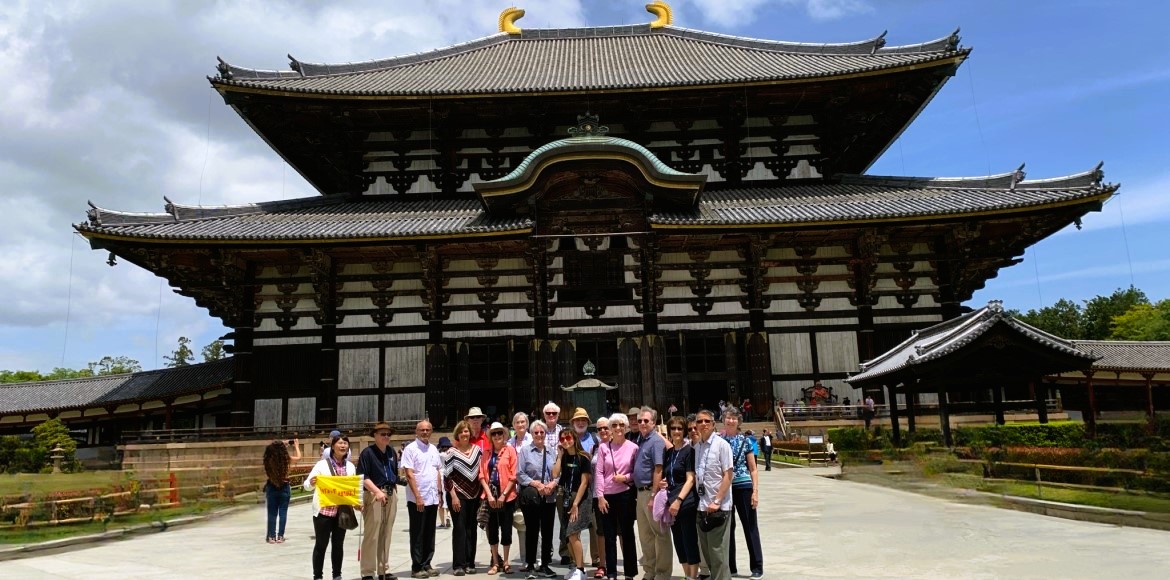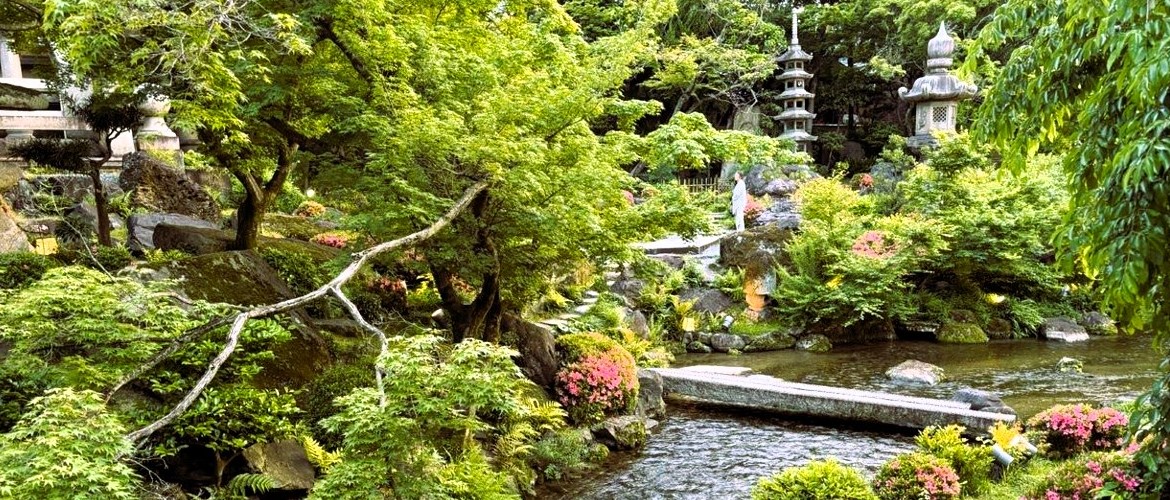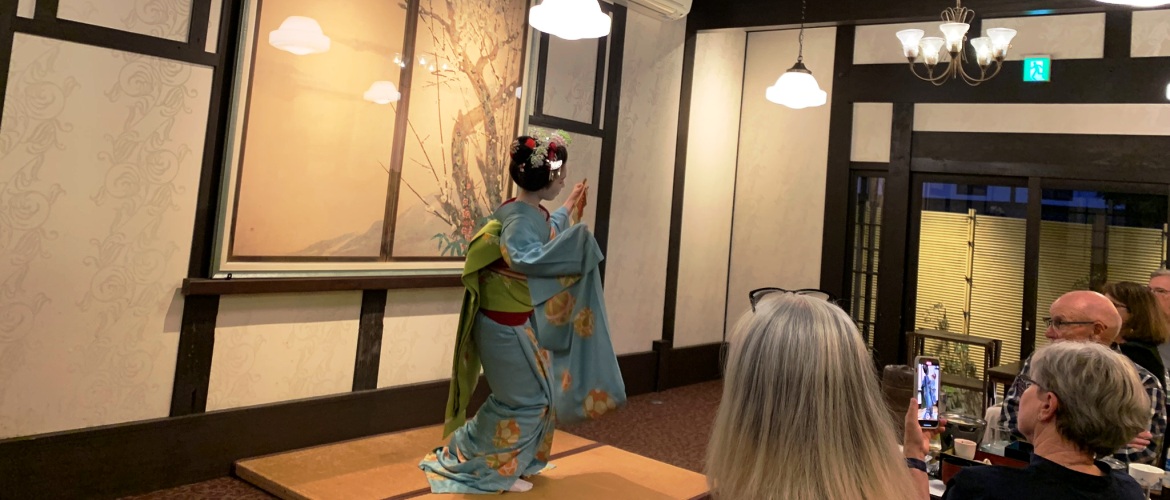If you are planning your first trip to Japan, you may find our 12-day Essential Japan tour an ideal choice. Intended for first-time visitors to Japan, this premium small-group tour package takes in the highlights of the Land of the Rising Sun giving you a perfect introduction to this popular destination.
We have several Japan tours for first time visitors to Japan and this 12-day Essential Japan has been very popular. The trip begins in Tokyo and ends in Osaka. Guests who have to go back to Tokyo to fly back home can be easily accommodated.
A first-time visit to Japan is exciting! With so much to see and do, you want to make your itinerary is planned right and combines the country’s mix of ancient traditions, bustling cities, natural beauty, and cutting-edge technology. Our 12-day Essential Japan definitely fits the bill in that it balances urban exploration, rich cultural and epicurean experiences, and some nature.
So check it out and let us know if you have any questions:

Recommended Itinerary for First Trip to Japan – Essential Japan (12 days)
Tokyo – Mt. Fuji – Hakone – Kanazawa – Takayama – Shirakawa – Kyoto – Nara – Osaka
Join us on this exquisite small group Japan tour through the heart of Japan, where ancient traditions gracefully dance alongside the vibrant rhythm of modernity. In dynamic Tokyo and Osaka, neon lights and bustling energy of urban life pulse with the beat of contemporary Japan. As we wander through the poetic streets of Kyoto, where cherry blossoms and autumn leaves whisper tales of ancient elegance, we find ourselves embraced by the essence of a bygone era. And then there is the ancient capital of Nara, where sacred deer roam freely. Chances are, until now, you haven’t heard much about romantic Kanazawa and the mountain town called Takayama. Now is time to go find out why they are becoming so popular among overseas visitors.
Important Features
- Small group size (average 15, maximum 20)
- Expert tour leader and local guide(s)
- Premium hotels
- high-quality local and Western cuisines
- No shopping stops
- Sushi making lesson
- Kaiseki dinner featuring geisha dancer (maiko) performance
Meal Code: B = breakfast / L = lunch / D = dinner

Day 1/Mon: Departing Home City
The journey begins with your transpacific flight departing from a city of your choice. You’ll lose a day upon crossing the International Date Line.
Day 2/Tue: Arrival in Tokyo
Welcome to Tokyo!
Please make your way to the hotel on your own. Detailed up-to-date information on how to get to the hotel will be provided in the final update two weeks before departure. Private transfer can be arranged on request.
Day 3/Wed: Tokyo (B/L)
Tokyo, literally meaning “eastern capital” and officially named Tokyo Metropolis, is one of the most populous mega-cities in the world with a population of 14 million. Formerly known as Edo, the city has been the de facto seat of the Japanese government since 1603 when shogun Tokugawa Ieyasu chose the city for his headquarters. The shogun (general) was a hereditary commander ceremoniously appointed by the emperor but held real power over the country during the shogunate period between 1192 and 1867. Edo was renamed Tokyo after Emperor Meiji moved his seat from Kyoto in 1868 when the last shogun was forced to return power to the imperial court. The city covers an area of 2,187 square kilometres following the merger in 1943 of the city of Tokyo and Tokyo Prefecture.
Our full-day sightseeing begins at the plaza in front of the Imperial Palace. A stroll across the plaza accompanied by commentaries on the imperial family and the history of Tokyo gets the tour off to a good start.
We then proceed to Senso-ji, the oldest Buddhist temple in Tokyo dating back to 628.
After lunch, we drive through the ritzy Ginza shopping district on the way to Meiji Jingu, a Shinto shrine dedicated to Emperor Meiji (1852 -1912) and his wife.
We end the day with a visit to the observation deck atop the Tokyo Metropolitan Government Building in Shinjuku. On a clear day, the visitor could see the peak of Mount Fuji which is located about 84 km to the west. The building complex completed in 1990 at a cost of US$1 billion consists of three main structures each taking up a city block. The architect of the Tokyo Metropolitan Government Building is Kenzo Tange (1913 – 2005), who in 1987 became the first Japanese to win the Pritzker Prize for Architecture.
Day 4/Thu: Tokyo – Mt. Fuji – Hakone – Tokyo (B/L)
We depart at 7:30 AM for a full-day excursion to Mt Fuji and Hakone.
Mt. Fuji, the highest mountain (3,776 metres) in Japan, is a two-hour drive from Tokyo. We stop by the Fujisan World Heritage Center to view the summit and learn about the history, formation and ecology of Mt. Fuji through exhibits and a short film. However, it is purely a matter of luck whether the summit is visible as Mt. Fuji is often shrouded in clouds. Our schedule does not include hiking the mountain – the trails are open between July and early September and it would take the average person at least six hours to hike to the summit even if one starts from the highest station at 2,305 metres above sea level.
We then proceed to Lake Ashi in Hakone for a half-hour cruise across the lake. This is followed by a 10-minute cable car ride that transports us to the station overlooking the sulphur-spewing Owakudani Geothermal Valley. On a clear day, the cable car ride provides stunning views of Mt. Fuji and its surrounding mountain slopes.
We expect to arrive back at the hotel around 6:00 PM.
Day 5/Fri: Tokyo – Kanazawa (B)
Enjoy some downtime before boarding the high-speed train (Hakutaka #561, 11:24/14:17) to Kanazawa. Be sure to grab some snacks for lunch before getting on the train.
[ read more ]

